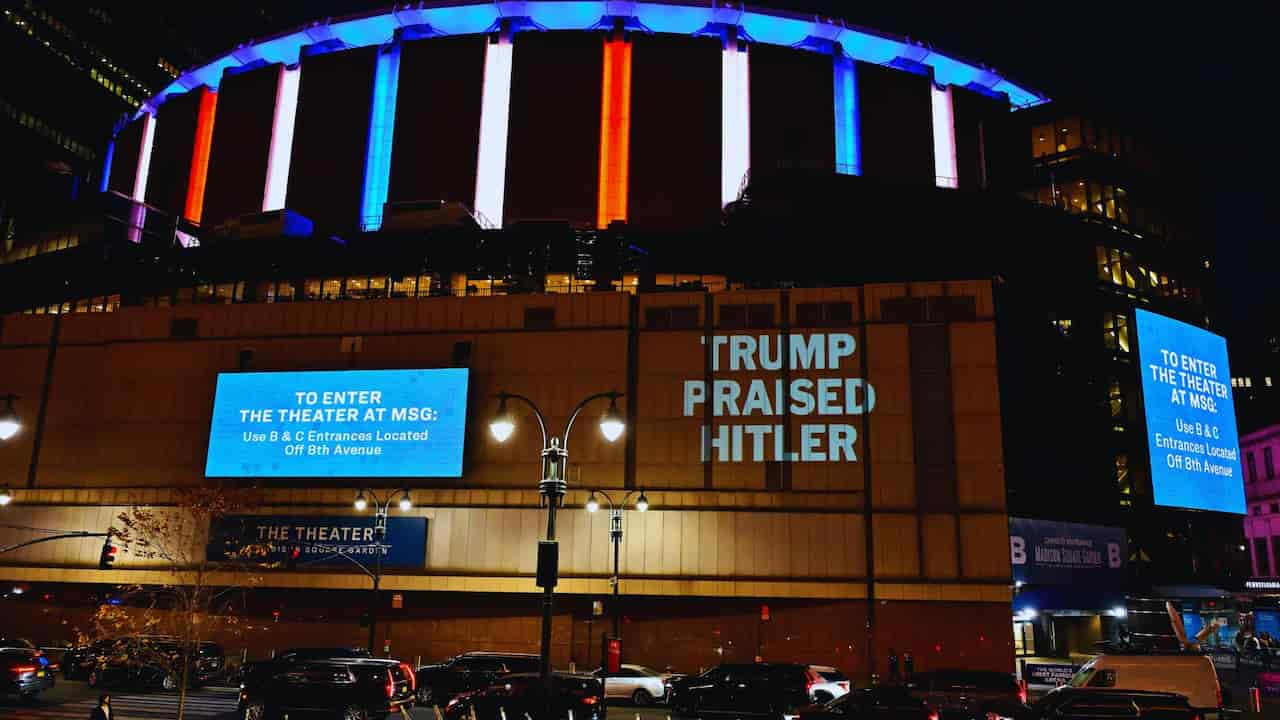Media Firestorm Erupts Over Madison Square Garden Political Rally Comparisons
In a controversial development that has ignited fierce debate across political lines, Sunday’s Donald Trump rally at Madison Square Garden has become the center of a heated discussion over historical comparisons and media coverage.
The event, which drew thousands of supporters to the iconic New York venue, sparked immediate comparisons to a 1939 gathering in the same location, leading to intense reactions from both critics and supporters. Here’s what unfolded and why it’s causing such widespread debate.
The Rally and its Aftermath
Former President Trump’s campaign event featured several high-profile speakers, including:
- Stephen Miller, former presidential aide
- Various celebrities and comedians
- Political figures and media personalities
The event gained significant attention when several prominent figures, including Hillary Clinton and Minnesota Governor Tim Walz, drew parallels to a historical 1939 gathering at the same venue. This comparison quickly became a focal point of national discussion.
Media coverage controversy
MSNBC found itself at the center of a separate controversy for its coverage decisions. The network’s broadcast, which included edited footage comparing the current event with historical footage, drew sharp criticism from various quarters. Tesla CEO Elon Musk notably condemned the network’s approach, calling it “utter scum of the earth.”
Key Points of Contention
Several aspects of the event sparked debate:
- Speaker rhetoric: Some speakers’ comments about immigration and national identity drew scrutiny.
- Media Representation: Questions arose about responsible journalism and historical comparisons
- Public Response: The event generated both strong support and protest.
Notable Reactions
The comparisons drew varied responses:
- Trump supporters strongly rejected the historical parallels.
- Campaign spokesperson Karoline Leavitt criticized the comparisons as attacking “half the country.”
- Senator Marco Rubio accused media outlets of unfairly portraying Trump supporters.
Expert Perspectives
Scholars and analysts point out that while some rhetorical elements might echo historical patterns, the contexts are fundamentally different. According to Raúl Pérez, professor of sociology at the University of La Verne, modern political discourse often uses humor differently than in historical contexts.
The broader context
The event occurs against a backdrop of
- Heightened political tensions
- Ongoing electoral campaign activities
- Debates about media responsibility
- Discussions about historical awareness
Moving Forward
The controversy highlights several ongoing challenges in American political discourse:
- Balancing historical awareness with contemporary context
- Responsible media coverage of political events
- Managing public discourse around sensitive comparisons
The event and its aftermath continue to generate discussion about the role of media, historical comparisons, and political rhetoric in modern American democracy.
As the nation moves closer to election day, this event serves as a reminder of the complex interplay between politics, media, and historical memory in shaping public discourse. The debate surrounding the rally and its coverage underscores the ongoing challenges in navigating politically sensitive discussions while maintaining journalistic integrity.
Table of Contents
